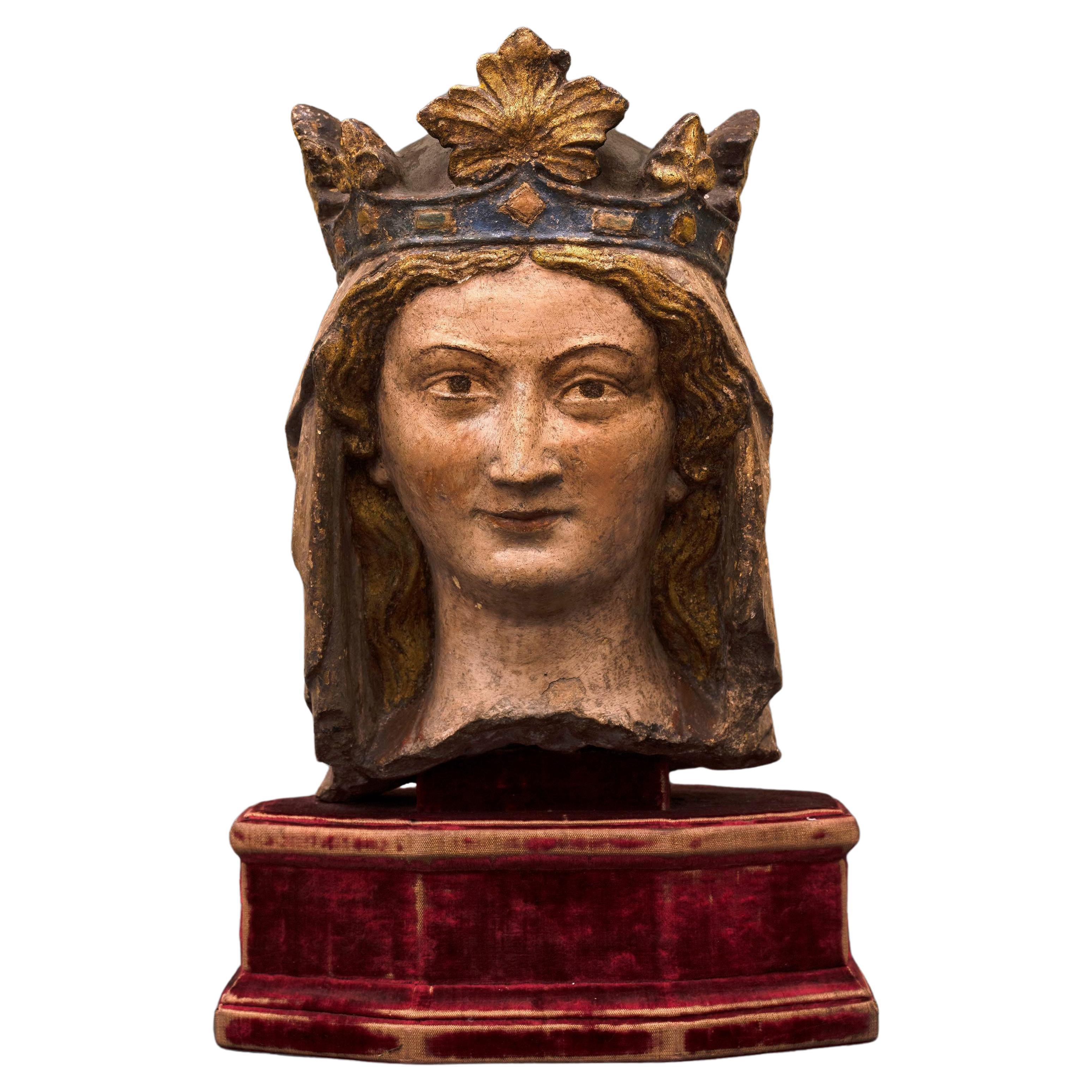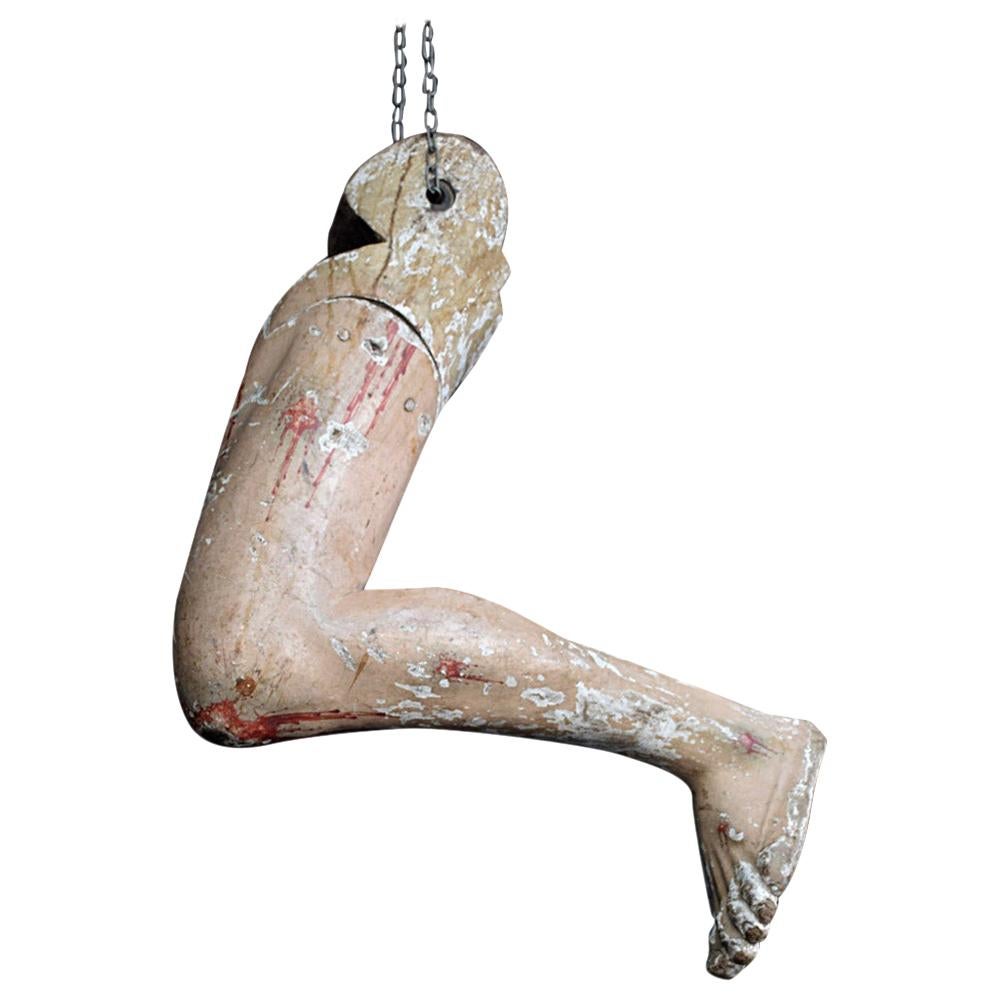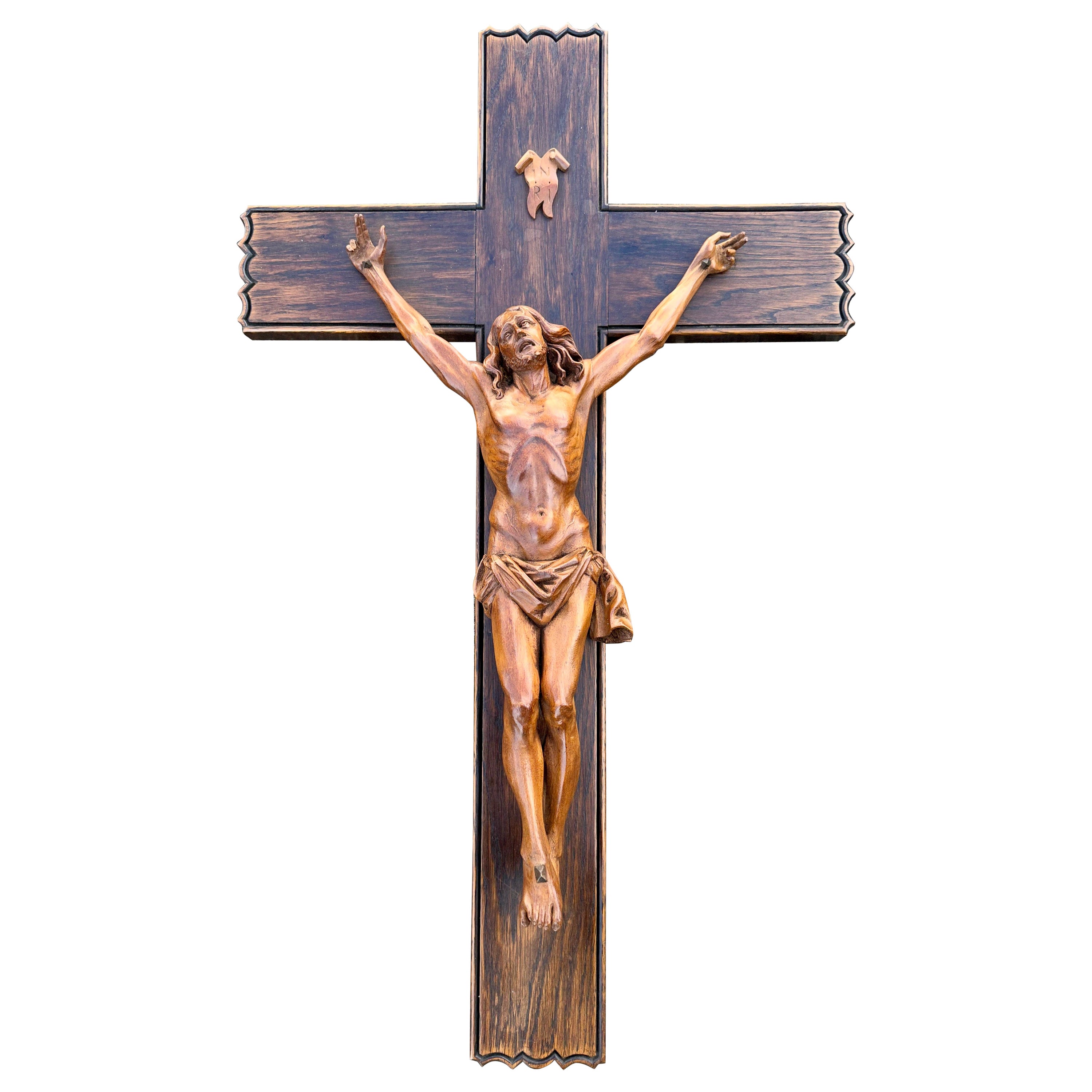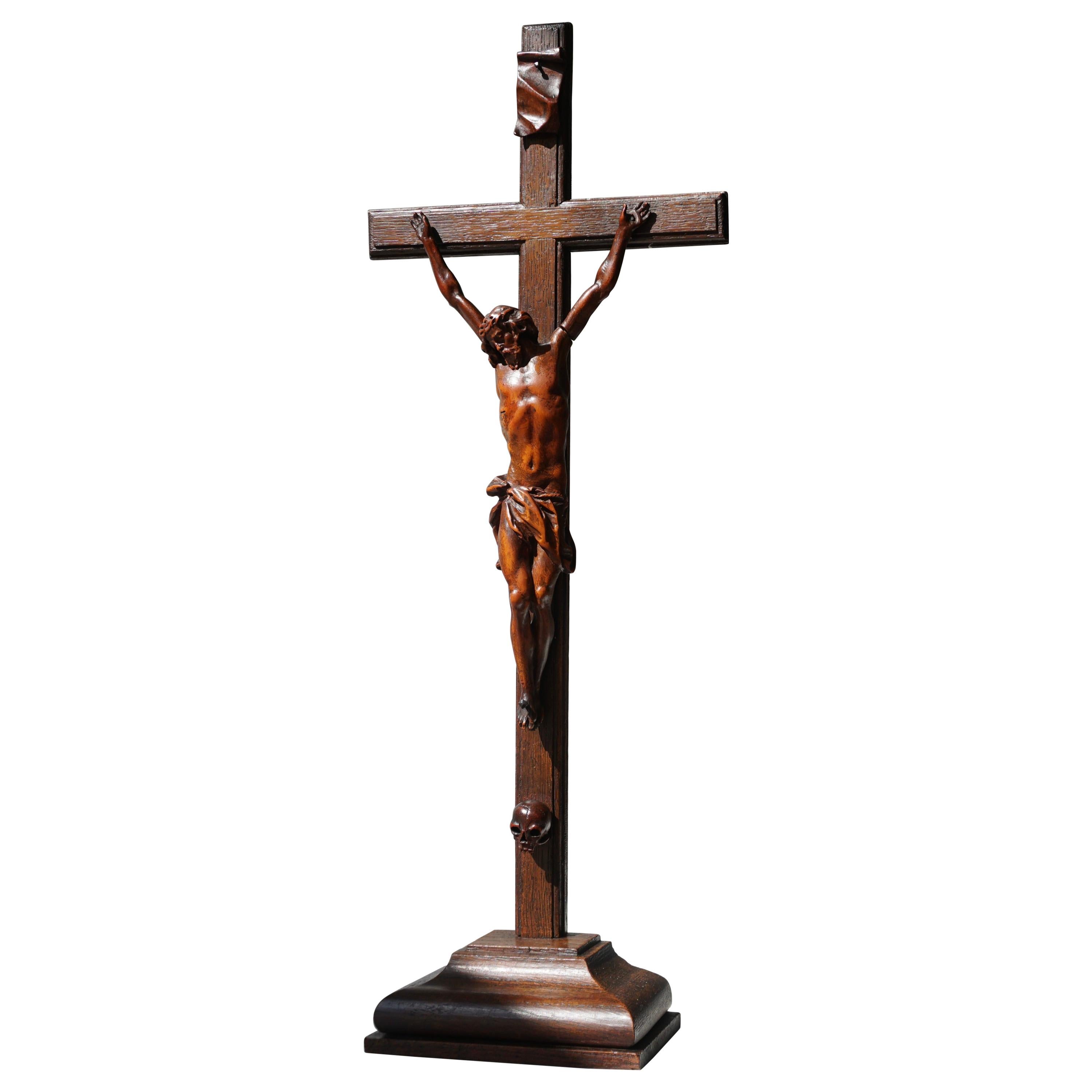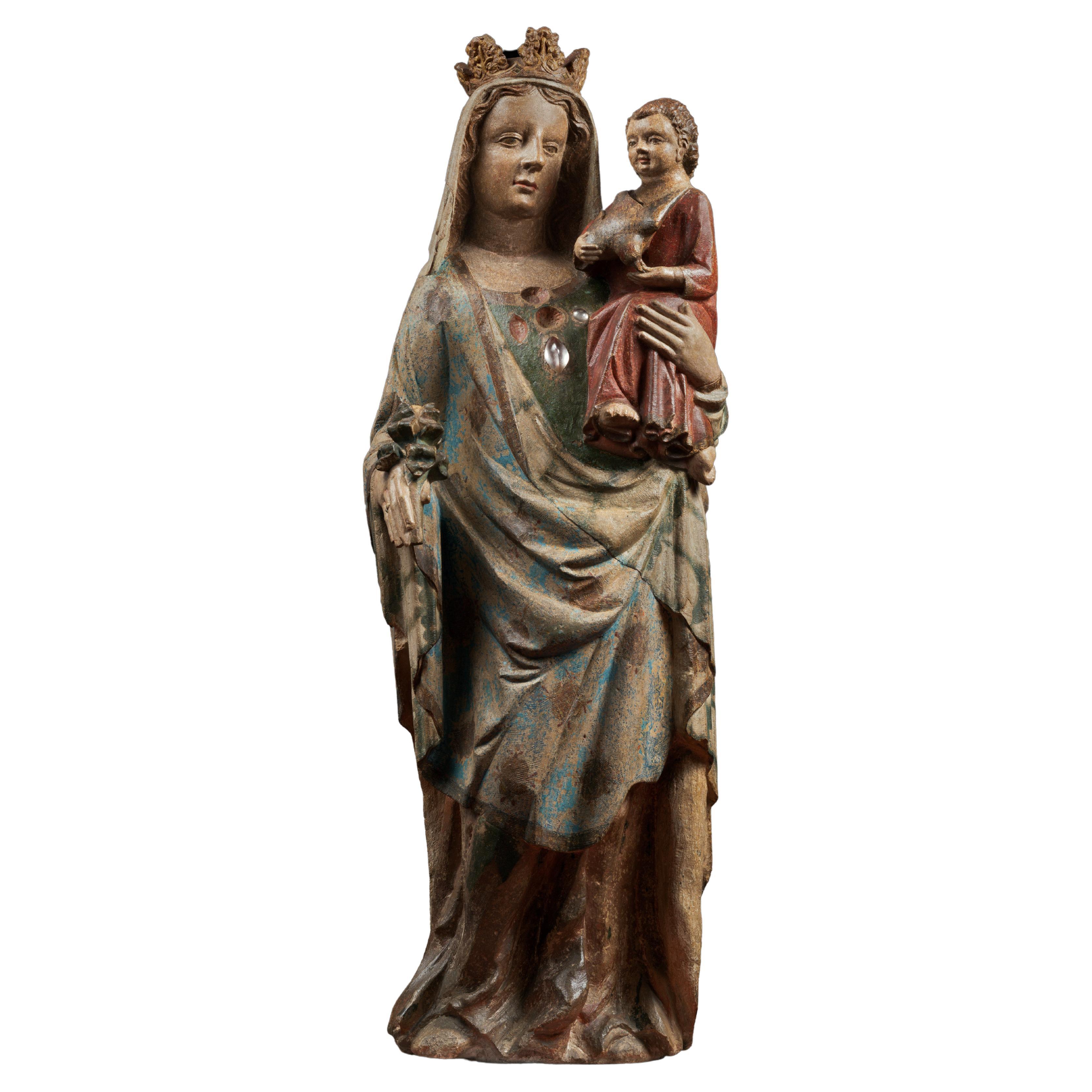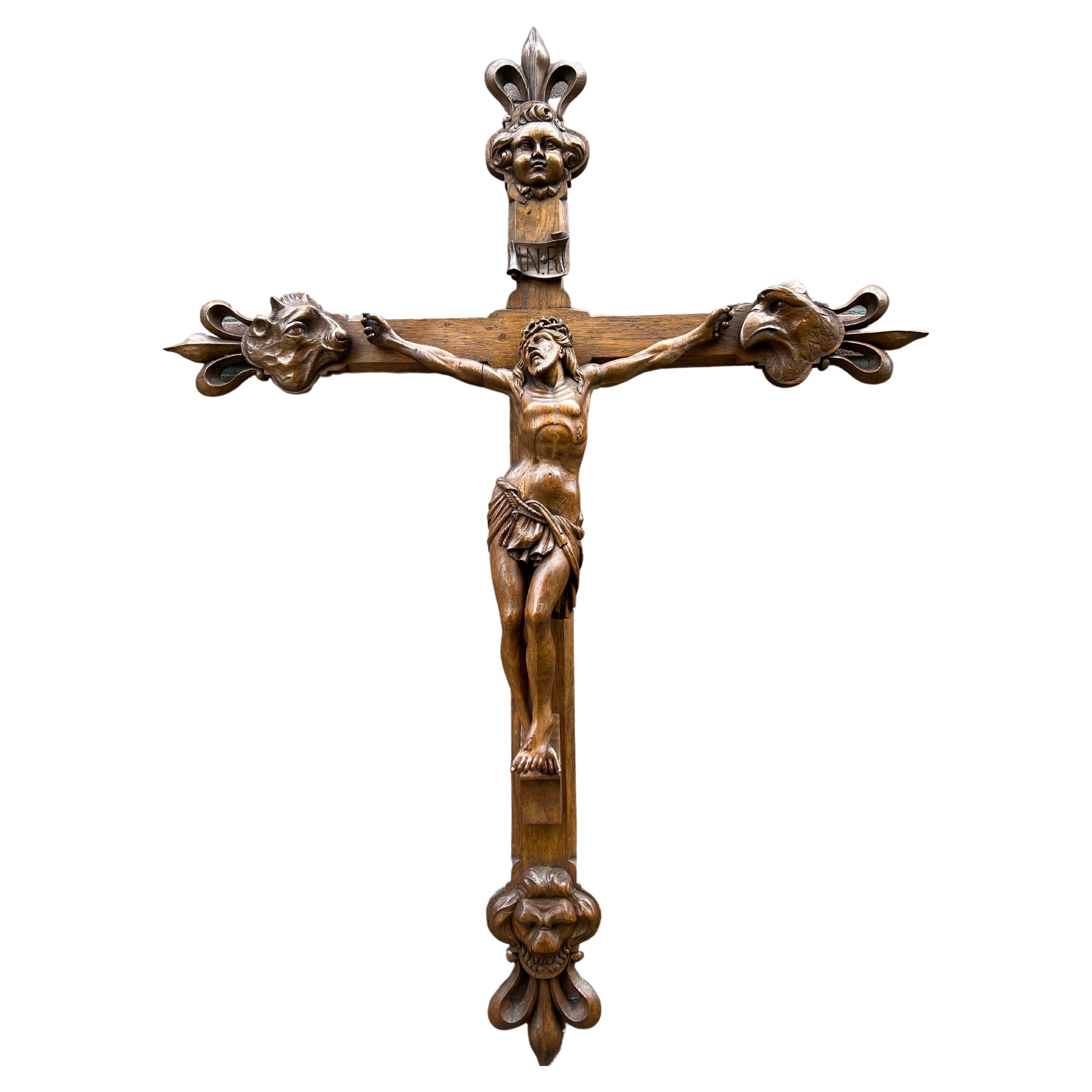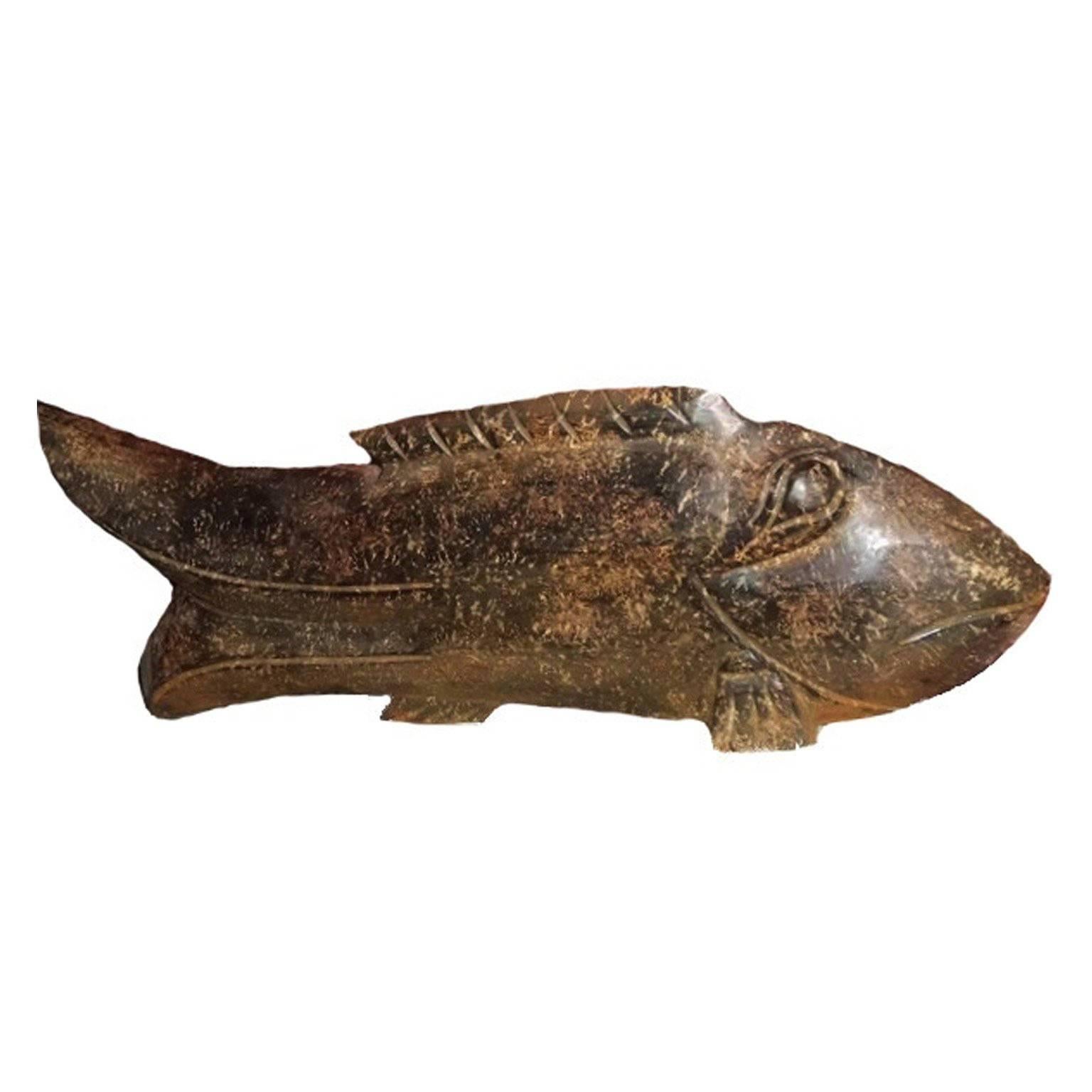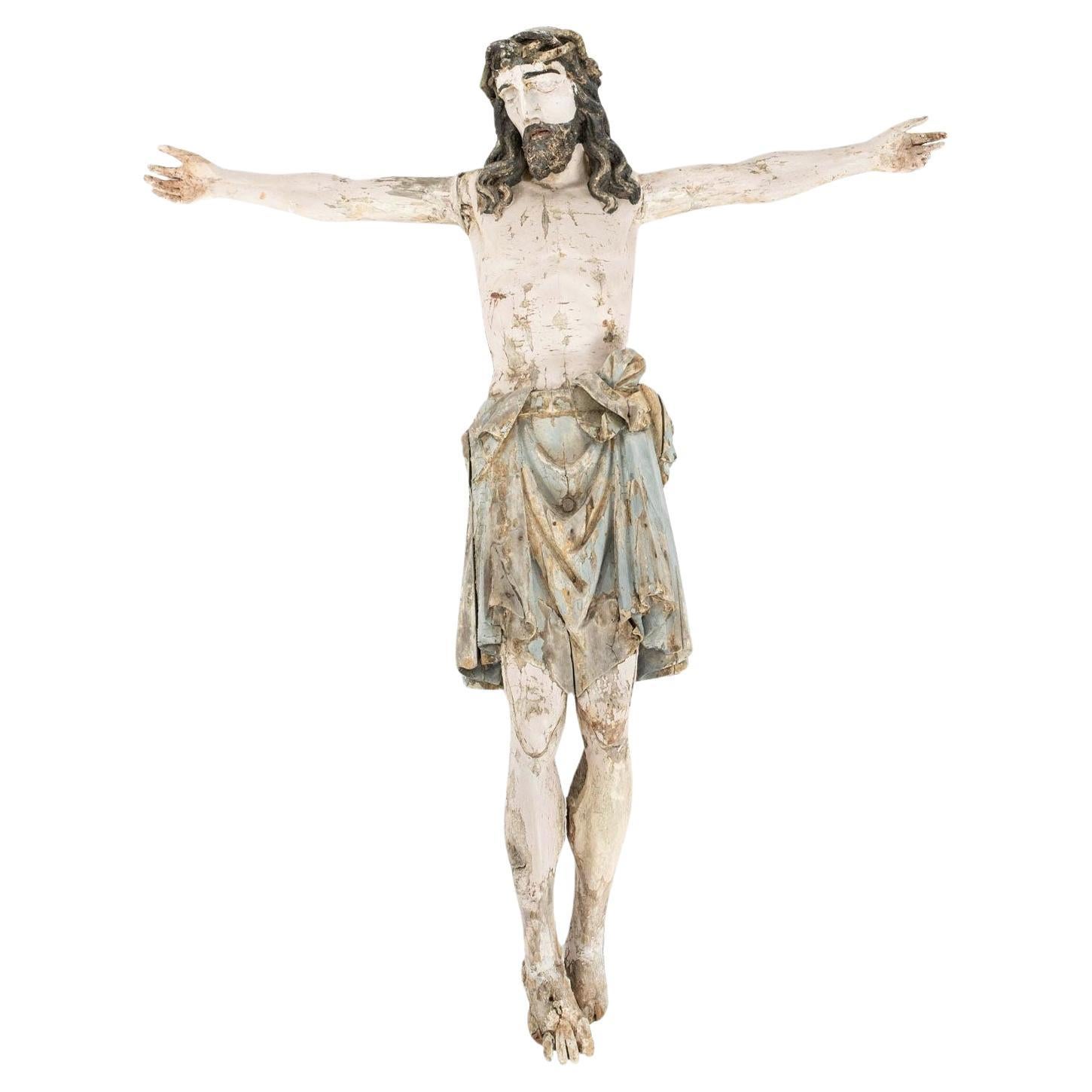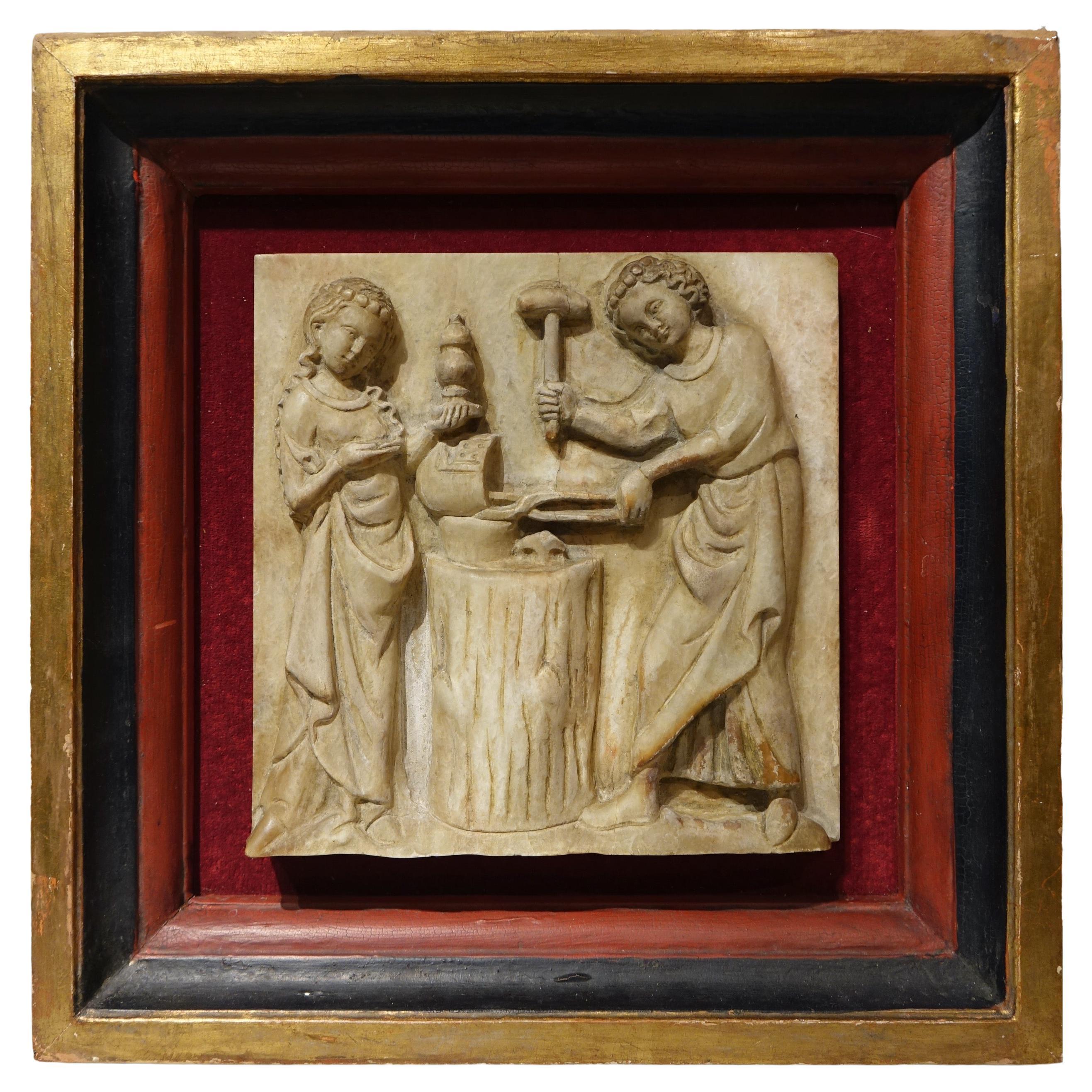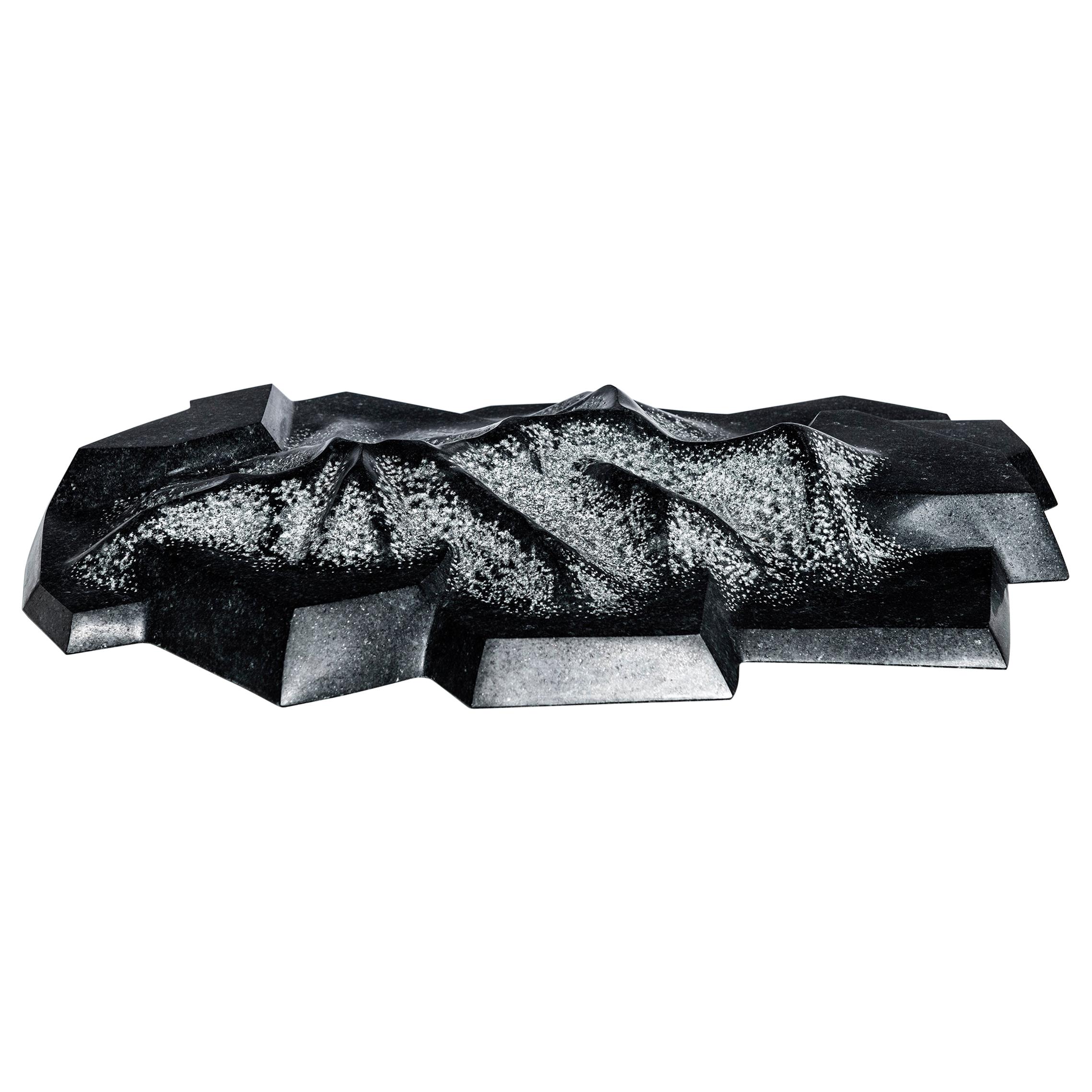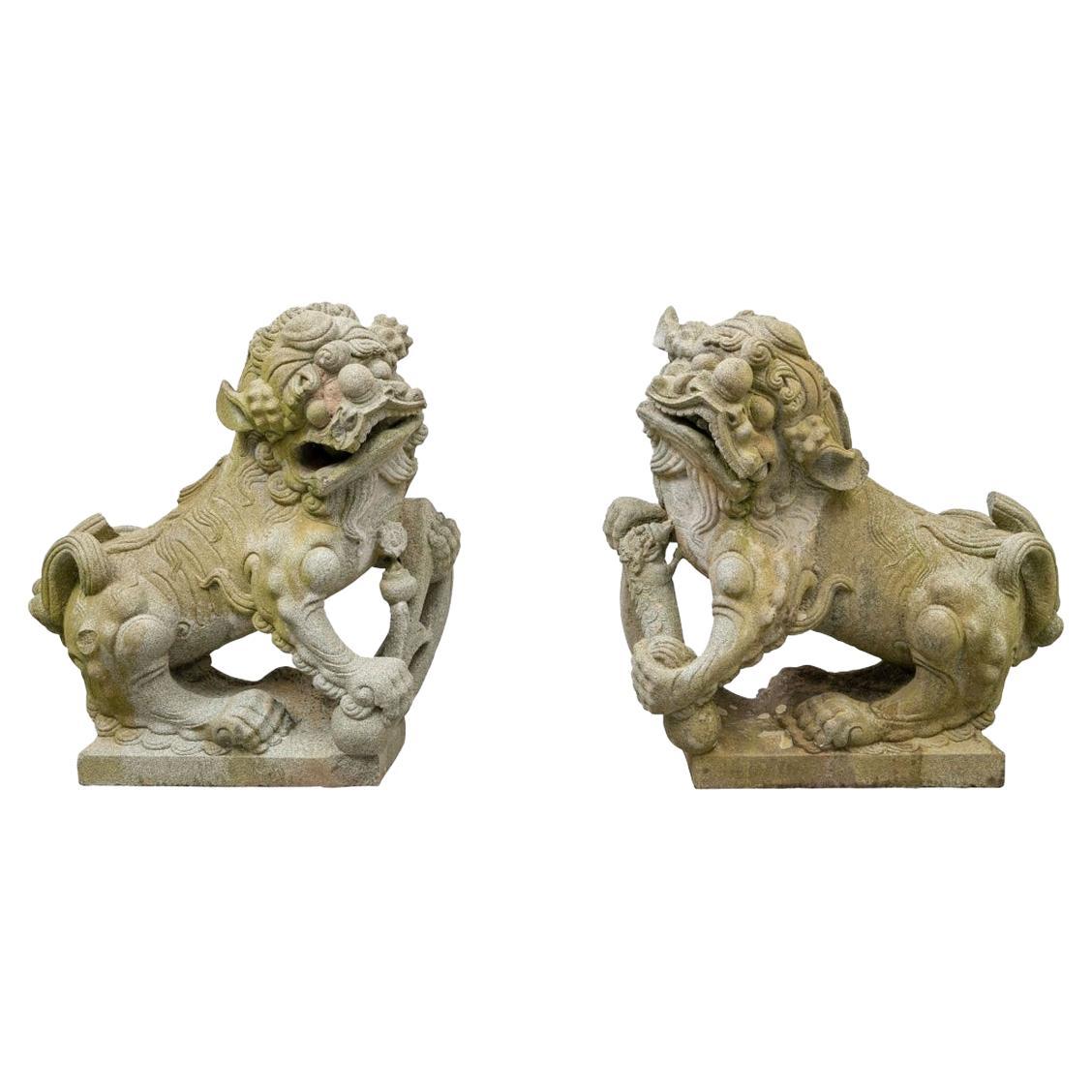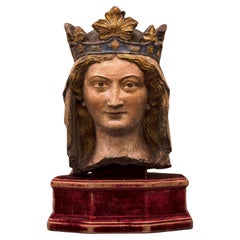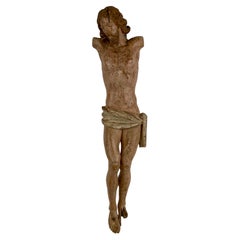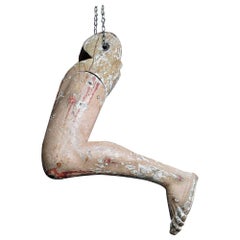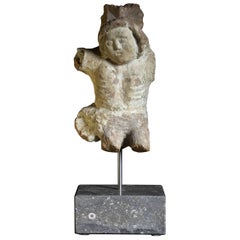
Gothic 14th Century Granite Corpus Christi
View Similar Items
1 of 3
Gothic 14th Century Granite Corpus Christi
About the Item
- Dimensions:Height: 20 in (50.8 cm)Width: 8 in (20.32 cm)Depth: 7 in (17.78 cm)
- Style:Gothic (Of the Period)
- Materials and Techniques:
- Place of Origin:
- Period:
- Date of Manufacture:circa 1350-1360
- Condition:Wear consistent with age and use. Minor losses. Minor structural damages. Now lightly weathered, originally part of an internal scene of Christ on the Cross, with arms and legs lost and remains of original sculpted cross to rear. Retaining the original ground preparation for polychrome decoration.
- Seller Location:Matlock, GB
- Reference Number:Seller: 32551stDibs: LU271039040343
You May Also Like
- Gothic crowned Head - Île de France, 14th centuryLocated in Bruxelles, BEHead of a crowned Virgin Île-de-France, first half of 14th century. H26 x 14 x 14 cm Provenance : - Private Collection, Paris France (1960) - Private Collection Tuscany, Italy (19...Category
Antique 15th Century and Earlier French Gothic Figurative Sculptures
MaterialsStone
- Corpus Christi in limewoodLocated in 'S-HERTOGENBOSCH, NLCorpus Christi in polychromed limewood.Category
Antique 1710s European Baroque Figurative Sculptures
MaterialsWood
- 19th Century Life-Size Corpus Christi Figure LegLocated in London, GB19th century life-size corpus Christi figure leg We are proud to offer a very unusual religious artifact, dating from early to mid-19th century and either Spanish or Italian in orig...Category
Antique 1850s Spanish Early Victorian Religious Items
MaterialsOak, Paint
- Great Quality Carved & Superb Condition Wooden Corpus Christi on Crucifix, 1800sLocated in Lisse, NLAntique crucifix with stunning hand carved details and an amazing patina. This remarkable and good size crucifix with a sculpture of a suffering Christ on the cross is another one...Category
Antique Early 19th Century German Gothic Religious Items
MaterialsFruitwood, Oak
- Rare and Remarkable Corpus Christi on a Decorated Wooden Cross with a SkullLocated in Antwerp, BE19th century crucifix or corpus Christi made from wood. Wooden cross with a nice patina and an exquisite shape. This item depicts the Christ in his last agony on the cross, after be...Category
Antique Late 19th Century Belgian Gothic Figurative Sculptures
MaterialsWood
- Important 14th Century Polychrome Limestone Virgin from LorraineLocated in Saint-Ouen, FRProvenance : - Kunsthaus Heinrich Hahn, Frankfurt am Main, sale 16, June 17, 1930, lot 16. - Sotheby's, Amsterdam, Feb. 26, 2006, lot 201. HISTORIC Located between Moselle valley and Meuse valley, framed by the Vosges Mountains on the south side and the duchy of Luxembourg on the north side, the duchy of Lorraine is the result of several partitions. It starts with the 9th century when the Carolingian empire is divided, with Lothar 1st inheriting Lotharingia. In 959 this territory was in turn divided in two; Lower and Upper Lotharingia, the latter being the forebear of the duchy of Lorraine. This duchy was under the rule of the Holy Roman Germanic Empire until 1736 when it was absorbed by the kingdom of France. All along its history the duchy of Lorraine has found itself in the midst of many conflicts. Alliances and feuds marking European history were always particularly sensible in Lorraine where instability was frequent. Because of its geographic position the duchy of Lorraine was also an artistic crossroad. Hence the duchy of Lorraine becomes from the 13th century onwards an important artistic centre where a particular type of Virgin and Child appears. According to professor J. A. Schmoll the characteristics of Lorraine sculpture burgeon around 1280-1300 in the Aube region. It presents “vigorous volumes, restrained movements, rare but solemn gestures and a strong interiorised and stern expression”. Those Virgins look similar with a wide forehead, a shield- or oval-shaped face, large neck, small lips and a cleft chin. This model is particularly in favour during the 13th century because of the revival for Marial worship and for the theme of the Virgin and Child. It bears witness to a new religious sensibility with a more intimate vision of religious practice. DESCRIPTION The important 14th century Virgin we present to you is one of the most beautiful examples of sculptural art from Eastern France, with her fascinating distant gaze. Her contrapposto posture is induced by the weight of the child she carries high on her left side. The child has a chubby face framed by blond hair with well defined curls and he wears a long red V-collared tunic from which emerge his feet. The fabric is animated by long folds. The position of the right foot turned to the back is a detail we can notice on several Virgins from Lorraine. He holds a bird that seems to be pecking his thumb. “The bird /held by the child in his hands/ has been read as a reference to an episode from Christ’s childhood when he has moulded sparrows with clay before giving them life. It appears in the apocryphal gospel of Pseudo-Matthew (ch. 27) and later in the Quran (III, 43, v. 110). However the iconography seems to be more influenced by the concept of Redemption or of Eucharist, the bird symbolising the soul of the Christian about to be redeemed or revitalised.” Mary wears a long dress with two rock crystal cabochons remaining from the original five. She is covered by a red cloak enriched with old-gold motifs draped as an apron falling in long pleats along her left hip. The relief treatment and the volume of the cloak developing a network of concentric pleats contrast with the the flat pleating of her dress. They nevertheless suggest the curve of her bent right leg. She wears a floret crown securing a short thin veil carved in very low relief. From it emerges her blond curled hair characteristic of the 13th century. The large face with almond-shaped eyes, straight nose, small lips and cleft chin casts its gaze afar in a fashion typical of 13th century Virgins. In her right hand she holds a lily flower. In a very refined manner the artist has carved a band on her right ring-finger. In the back, carefully sculpted, spreads the minutely detailed short veil. COMPARATIVE STUDIES This sculpture of great quality presents obvious similarities with Virgins from Lorraine, designated by William Forsythe...Category
Antique 15th Century and Earlier French Gothic Figurative Sculptures
MaterialsLimestone
Recently Viewed
View AllMore Ways To Browse
Carved Corpus Christi
Aelteste Volkstedter Porzellanmanufaktur On Sale
African Marionette
Andreoni Marble
Antique Artist Mannequin Wood
Antique Porcelain Clown
Apollo And Dafne
Aristide Croisy
Art Deco Biba Lamp
Articulated Mannequin Italy 20th Century
Augarten China
Chinese Horse Riders Statues
Dresden Lace Figurines
Dresden Lace Porcelain Figurines
Edme Dumont
Elestial Quartz
Georges Coudray
Georges Omerth
